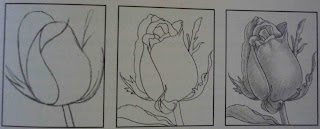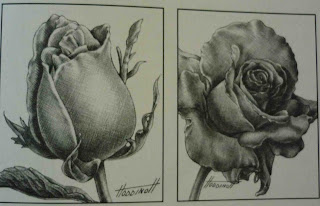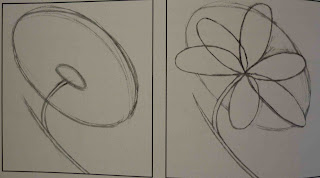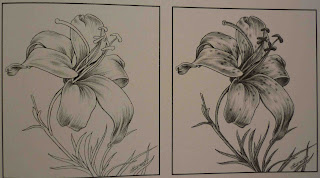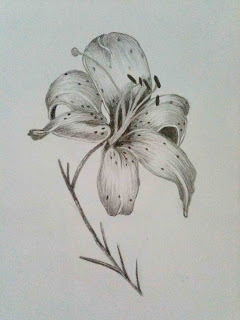Each time you look or go outside during the day take a look at the sky and notice all the different cloud formations there are. Analyse their different shapes, forms and range of values. Below are 3 drawings that Brenda has created to demonstrate the difference in the following skies.
The first drawing shows Clear and Calm: here the illusion of depth is created with atmospheric perspective (see chapter 9). By graduating the shading from dark to light you’re able to achieve this. The second drawing shows shows a stormy and angry sky: here Brenda portrays the skies ability to show anger by drawing dark skies with lighting cracking through the clouds as well as some cloud that tunnels towards the earth with the potential to be a tornado. The third drawing demonstrates cloudy and picturesque: Here Brenda demonstrates the softer side of clouds and manages to portray there fluffiness really well.
You need to think of clouds as 3 dimensional objects, that are effected by shadows and highlights like any other object and in order to draw their perspective right you need to apply the same rules you would for solid objects. The clouds closer to the horizon will appear smaller than the clouds above your head.
A tip offered up by the book suggests adding human elements to your scenes. Be it a chair, a path through a wooded area or actual people themselves. Also feel free and comfortable to modify, rearrange, completely remove or change various parts of you scene in anyway that inspires you!! Drawing is not just about copying what nature has arranged.
Next up is project 15: Dreaming of a white Christmas. Now this project was lots of fun, I think I enjoyed it because it’s like nothing I have ever done before.
Below are the pictures to show you the steps, but in order to show this one properly I’m going to have to write out some of the written instruction so you can see what techniques have been used.
1: Draw a rectangle approx. 10 x 5 inches
2: Shade in the whole rectangle inside with a stick of charcoal, using the side of the stick (as it’s faster).
3: Now take a tissue and gentle rub the whole surface until you achieve a solid tone. (this will lighten your shading a bit)
4: Use your kneaded eraser to begin erasing your light areas i.e. for trees.
5: carrying on using your kneaded eraser to add in the snow more trees and the sky.
6: Switch to your vinyl eraser to add in brighter sharper areas in the trees, sky, snow river etc.
7: Use your charcoal pencil to add in your darker areas
and Voila... a beautiful winter scene.
 |
| My winter scene |
(Please note: that photo examples are taken from "Drawing for Dummies by Brenda Hoddinott'' and the above views are not representative of her and are purely based on a 3rd party view being Me! All snippets taken directly from the book are stated as been so)






